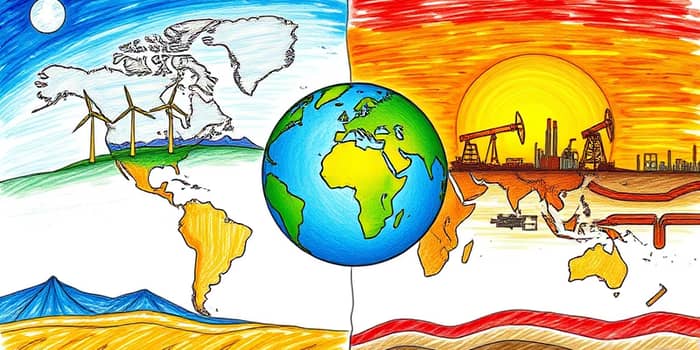
Global energy governance is undergoing one of its most significant transformations in decades, as two major blocs articulate contrasting visions for the world’s energy future. The G7, representing advanced economies, emphasizes climate neutrality and technological innovation, while BRICS, a coalition of emerging markets, prioritizes energy security, affordability, and inclusive development. This article delves into the core divergences, examines their implications, and suggests pathways to foster constructive engagement.
With rising demands for power, shifting geopolitical alliances, and pressing climate imperatives, the stakes could not be higher. Understanding how each group navigates these challenges offers insight into the evolving global order and the prospects for sustainable growth.
In the early 21st century, the balance of power in energy policy was largely held by developed economies, whose technological and financial resources drove global agendas. Today, that dominance is contested by BRICS, whose collective economic growth—forecasted at an average rate of 3.6% in 2024—far outpaces the G7’s projected 1%.
This shift reflects not only numerical growth but also a growing confidence among emerging economies to chart independent energy pathways. As BRICS expands its membership and influence, global energy governance becomes increasingly multipolar, reshaping trade patterns, investment flows, and diplomatic dynamics.
At the core of the divide lies each bloc’s philosophy on decarbonization. The G7 bloc, composed of some of the world’s most developed economies, has championed a rapid phase-out of fossil fuels and ambitious net-zero targets, underpinned by aggressive renewable expansion. BRICS, in contrast, frames its transition as just and inclusive energy transitions, seeking to balance environmental goals with the imperative of reliable access for billions of citizens.
This philosophical gap manifests in policy roadmaps, public investments, and diplomatic initiatives, setting the stage for both competition and potential cooperation.
Energy security remains a primal concern, yet G7 and BRICS pursue markedly different subsidy strategies. G7 members are formally committed to phasing out fossil fuel subsidies by 2025 but face internal resistance that has left reform efforts lagging.
BRICS nations, many of which still grapple with poverty reduction and rural electrification, maintain subsidies as part of an energy affordability strategy. For them, reliable access and price stability outweigh the urgency of immediate subsidy removal.
The result is a patchwork of policies that reflect differing national priorities and stages of industrial development.
Securing investment is critical for any energy transition. G7 countries rely heavily on established multilateral institutions such as the IMF and World Bank, supplemented by robust private sector climate finance. This ecosystem supports large-scale green infrastructure and advanced R&D projects.
By contrast, BRICS leverages the New Development Bank (NDB) to channel funds into sustainable projects, prioritizing local currency trade and intra-coalition investment. This approach enhances financial sovereignty and mitigates currency risks for member states.
These contrasting models underscore broader debates over governance, risk management, and the democratization of finance in shaping energy futures.
Technological advancement remains a pillar of each bloc’s strategy. G7 nations invest heavily in green technology, digitalization, and AI to modernize grids, optimize resource use, and drive down costs. Collaborative platforms, such as joint research consortia, reinforce this edge.
BRICS champions technological neutrality, promoting diverse solutions that cater to varied resource endowments. Its 2025–2030 energy cooperation roadmap outlines four objectives: strengthen cooperation, broaden inclusive transitions, improve governance, and expand trade and investment under the NDB umbrella.
While G7 aligns closely with Western-led climate accords, BRICS forges parallel frameworks that champion the interests of the Global South. This duality both complicates and enriches international dialogue, offering multiple channels for knowledge exchange and partnership.
Both blocs face significant hurdles. G7 struggles with internal coordination on subsidy reform and the tension between climate ambition and energy security, particularly during geopolitical disruptions. Meanwhile, BRICS must manage the diverse interests of its expanding membership, build resilient infrastructure across varied climates, and implement its 2025–2030 roadmap effectively.
To bridge the divide, stakeholders can pursue policy forums that incorporate shared data platforms, best practice exchanges, and joint R&D initiatives. Embracing inclusive dialogues may foster trust and accelerate both climate and development goals.
Looking ahead, the divergence in energy policy pathways will continue to shape global market dynamics, investment flows, and collective climate outcomes. Yet, through strategic collaboration—harnessing G7’s technological prowess and BRICS’s developmental insight—the world can move toward a more balanced and sustainable energy future.
References













